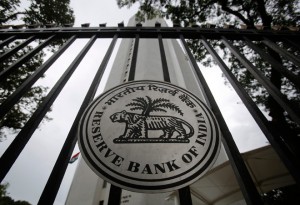 The Reserve Bank of India has introduced Scheme for Sustainable Structuring of Stressed Assets (S4A), which enable banks to carry out adequate financial restructuring to give projects a chance for a sustained revival. To be eligible under the S4A, the project should have commenced commercial operations; the aggregate exposure (including accrued interest) of all lenders in the account should be more than Rs 500 crore (including rupee loans, foreign currency loans/external commercial borrowings), RBI said. The debt should meet the test of sustainability — that is, debt of that principal value owed to lenders can be serviced over the same tenor as that of the existing facilities even if the future cash flows remain at their current level. Sustainable debt should not be less than 50% of current funded liabilities. The debt-resolution plan for large accounts should be agreed upon by a minimum of 75% of banks by value and 50% of banks by number in the JLF/consortium/bank, RBI said.
The Reserve Bank of India has introduced Scheme for Sustainable Structuring of Stressed Assets (S4A), which enable banks to carry out adequate financial restructuring to give projects a chance for a sustained revival. To be eligible under the S4A, the project should have commenced commercial operations; the aggregate exposure (including accrued interest) of all lenders in the account should be more than Rs 500 crore (including rupee loans, foreign currency loans/external commercial borrowings), RBI said. The debt should meet the test of sustainability — that is, debt of that principal value owed to lenders can be serviced over the same tenor as that of the existing facilities even if the future cash flows remain at their current level. Sustainable debt should not be less than 50% of current funded liabilities. The debt-resolution plan for large accounts should be agreed upon by a minimum of 75% of banks by value and 50% of banks by number in the JLF/consortium/bank, RBI said.
The scheme has three options. First option allows the current promoter continuing to hold the majority of the shares or shares required to have control. In the second option, the current promoter is replaced with a new promoter. In the third option, banks acquire majority shareholding in the entity through conversion of debt into equity either under SDR or otherwise and allow the current management to continue or hand over management to another agency/professionals under an operate and manage contract. After an independent Techno Economic Viability study, banks should divide the current dues of the borrower into Part A (sustainable debt) and Part B (the difference between the aggregate current outstanding debt, from all sources, and Part A), RBI said.
